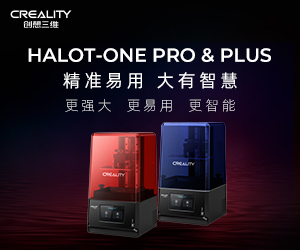1 研究背景及目的
從航空航天到運動裝備,社會對吸能結構的需求逐漸增加。吸能結構需兼具輕量化、低初始峰值力和優異的吸能性能,然而現有結構如薄壁、晶格等在高速沖擊下易發生不穩定變形或出現應力集中。相較之下,自然界中啄木鳥展現出顯著的吸能優勢,但是現有仿生結構多需較大體積或多材料制造,限制了其在有限空間內的應用。因此,本研究從輕量化、易制造角度出發,通過啄木鳥頭部仿生設計,提出一種可實現寬范圍可控吸能的結構,為更好服務于工程應用奠定基礎。
2 論文亮點
(1) 設計并通過PBF 3D打印技術制造了一種結構簡單且吸能可控的仿生雙層抗沖擊結構。
(2) 采用有限元分析方法,系統研究了結構關鍵參數對吸能性能的影響。
(3) 通過調整仿生雙層抗沖擊結構的結構參數,可實現寬范圍的吸能性能調控。
(4) 設計的雙層抗沖擊結構比吸能為現有吸能結構比吸能的1.5至13倍。
Fig. 1. Impact resistance principle of the woodpecker's head: (a) Schematic diagram of the hyoid bone; (b) Microstructure of the hyoid bone (K represents the keratin sheath and PG represents the central bone); (c) Microstructure of the beak.
3 試驗方法
本研究從理論分析、數值模擬和實驗驗證三方面對仿生結構的吸能特性進行了分析。首先從理論分析和數值模擬入手,明確了結構參數與受力之間關系,同時明晰了結構可實現的吸能范圍。然后采用自主研發的SLM 350打印設備對雙層抗沖擊結構和其中的類圓環結構進行制造,使用掃描電子顯微鏡對結構的打印質量進行評估,觀察結構是否有明顯缺陷。最后使用電液伺服萬能測試機對打印的吸能結構樣品進行壓縮測試,觀察結構的壓縮響應。
Fig. 2. Schematic diagram of the biomimetic double-layer impact-resistant structure.
4 結果
研究結果表明,仿生雙層抗沖擊結構可在滿足簡單化、輕量化前提下實現寬范圍的可控吸能。類圓環結構和斜圓柱結構在沖擊載荷下的力-位移曲線分為三個階段:彈性階段、平臺階段和致密化階段,其中平臺階段表現出較強的吸能能力。通過對類圓環結構和斜圓柱結構進行參數化研究,可知類圓環結構可實現比吸能(SEA)在13–72 J/g范圍內的有效調控,斜圓柱結構可實現SEA在11–137 J/g范圍內的有效調控。基于抗沖擊裝置的實際工程問題,進行了需求分析、參數匹配以及吸能效果的驗證,在充分考慮3D打印精度、結構尺寸和空間限制的基礎上,設計了可滿足裝置吸能需求的結構,證明了雙層抗沖擊結構的實用性和有效性。
Fig. 3. Force-displacement curves of quasi-circular ring structure under FEA and experiment.
Fig. 4. Compression process of the quasi-circular ring structures under different strains and printed photos of the structural sample: (a) The compression process of the quasi-circular ring structures under different strains; (b) Printed photos of structural sample (yellow circle marking printing residues).
Fig. 5. Relationship between SEA and structural parameters for quasi-circular ring structures and oblique cylindrical structures: (a) Schematic diagram of structural parameters; (b-c) The relationship between SEA and structural parameters for quasi-circular ring structures; (d) The relationship between SEA and structural parameters for oblique cylindrical structure.
Fig. 6. Comparison of required volume and SEA between biomimetic double-layer impact-resistant structure and existing energy absorbing structure.
Fig.7. Engineering application: (a) Requirement analysis schematic diagram (the green and red shadows mark the range of force-displacement curves that meet the requirements for engineering applications (the green shadow marking the adjustable safety range, the red shadow marking the range where the structure needs must break), while the gray shadow marking the dangerous range that does not meeting the requirements of engineering applications); (b) The SEA of each structure in the double-layer impact-resistant structure (the pink shadow marking the SEA of the quasi-circular ring structure, the yellow shadow marking the SEA of the oblique cylindrical structure); (c) Printed photos of the double-layer impact-resistant structure (yellow circle marking printing residues); (d) Numerical simulation and experimental verification results of the scheme.
5 結論
研究表明,以啄木鳥頭部抗沖擊機制為靈感設計的新型仿生雙層抗沖擊結構具有寬范圍可控吸能特性。所設計的類圓環結構和斜圓柱結構可通過PBF 3D打印技術一體化無支撐制造,其中類圓環結構可實現13-72 J/g 的SEA調控范圍,斜圓柱結構可實現11-137 J/g的SEA調控范圍。同時雙層抗沖擊結構所需體積僅為現有吸能結構體積的1%至15%,而SEA則為現有吸能結構SEA的1.5至13倍。
6 前景與應用
本文創新性地提出可兼顧小尺寸設計和寬范圍吸能的仿生雙層抗沖擊結構,同時該結構可利用現有增材制造技術實現無支撐制造。這種在吸能性能和尺寸方面的顯著優勢,使得所提出的仿生吸能結構在航空航天、汽車和土木工程等領域具有廣闊的應用前景。
(責任編輯:admin)
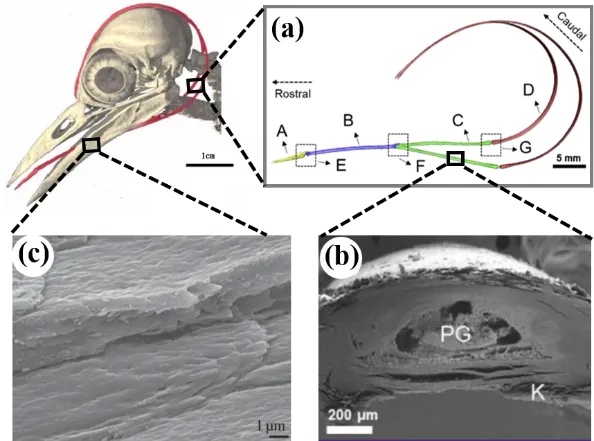
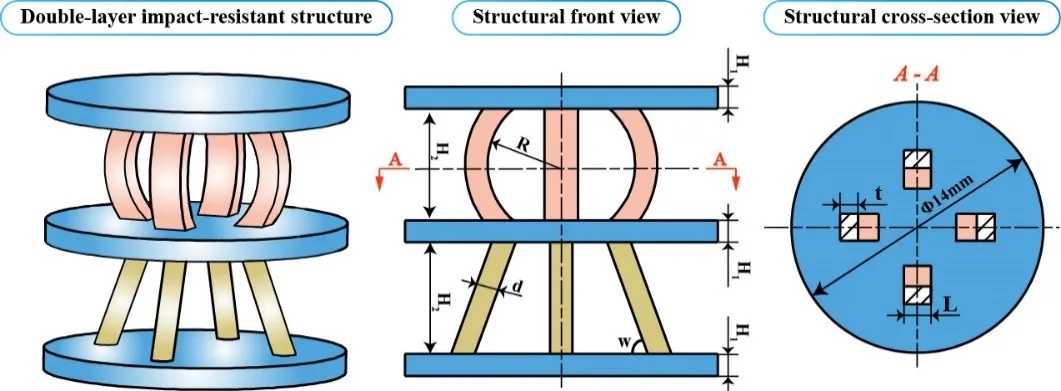
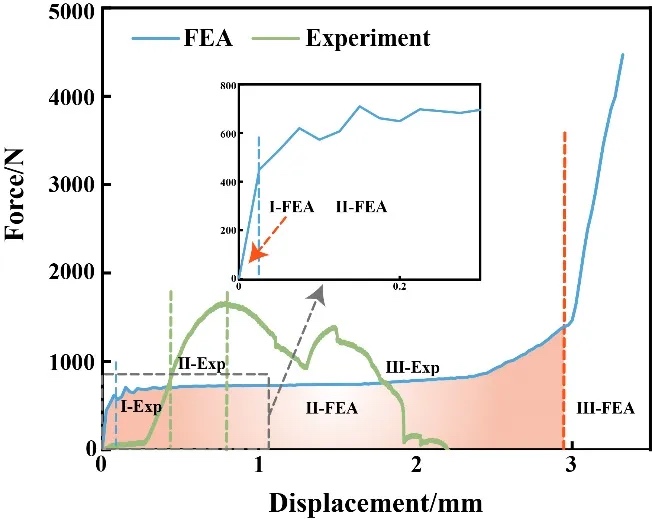
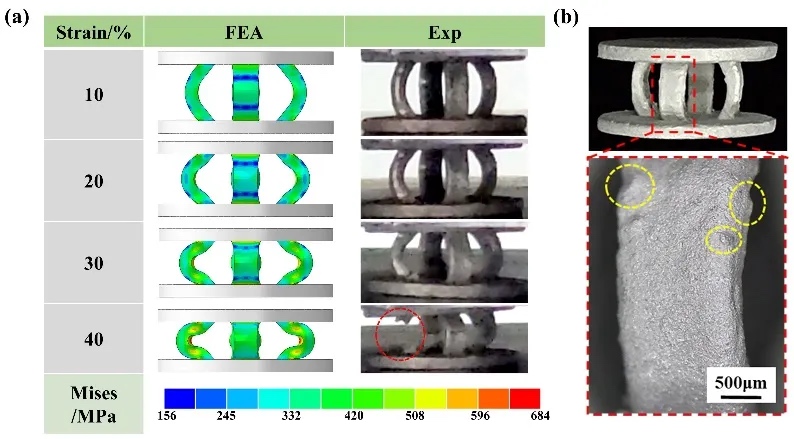
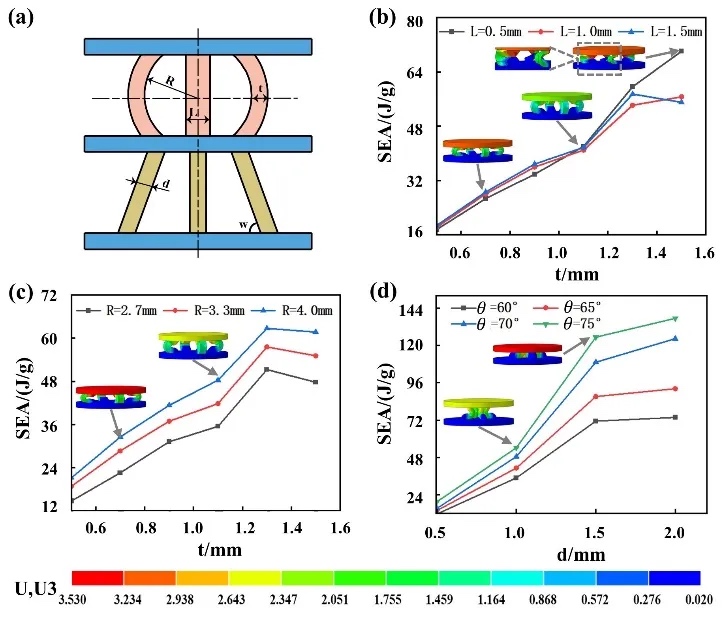
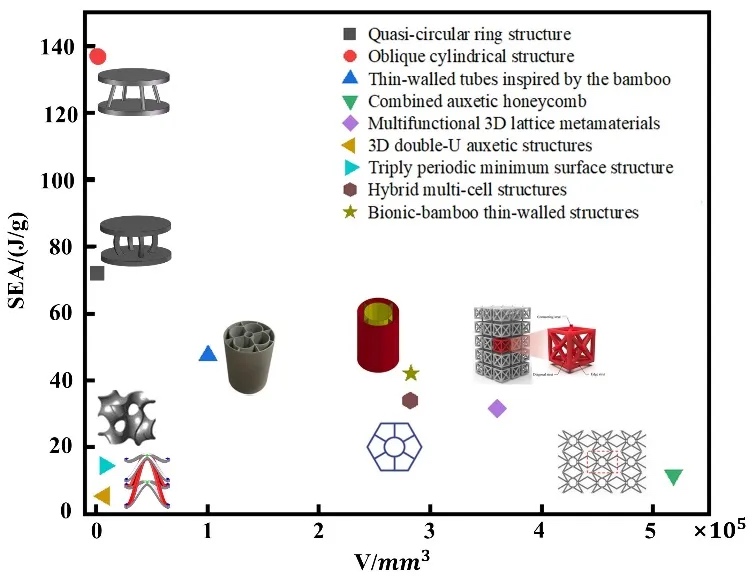
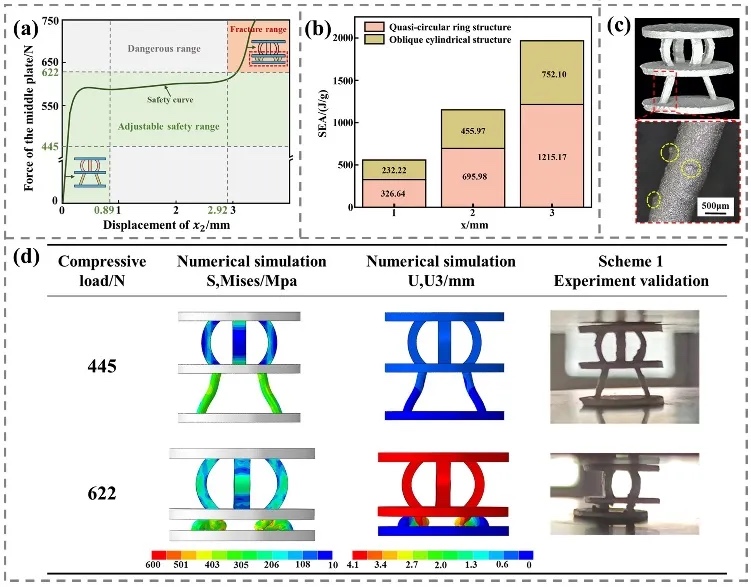


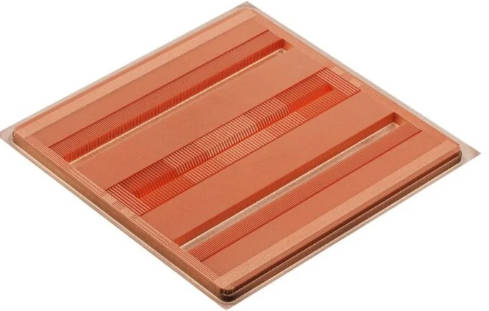 Fabric8Labs推出AI芯片定
Fabric8Labs推出AI芯片定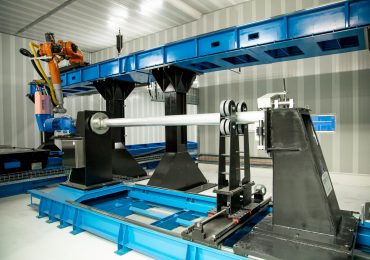 Titomic又一合作,將與nuF
Titomic又一合作,將與nuF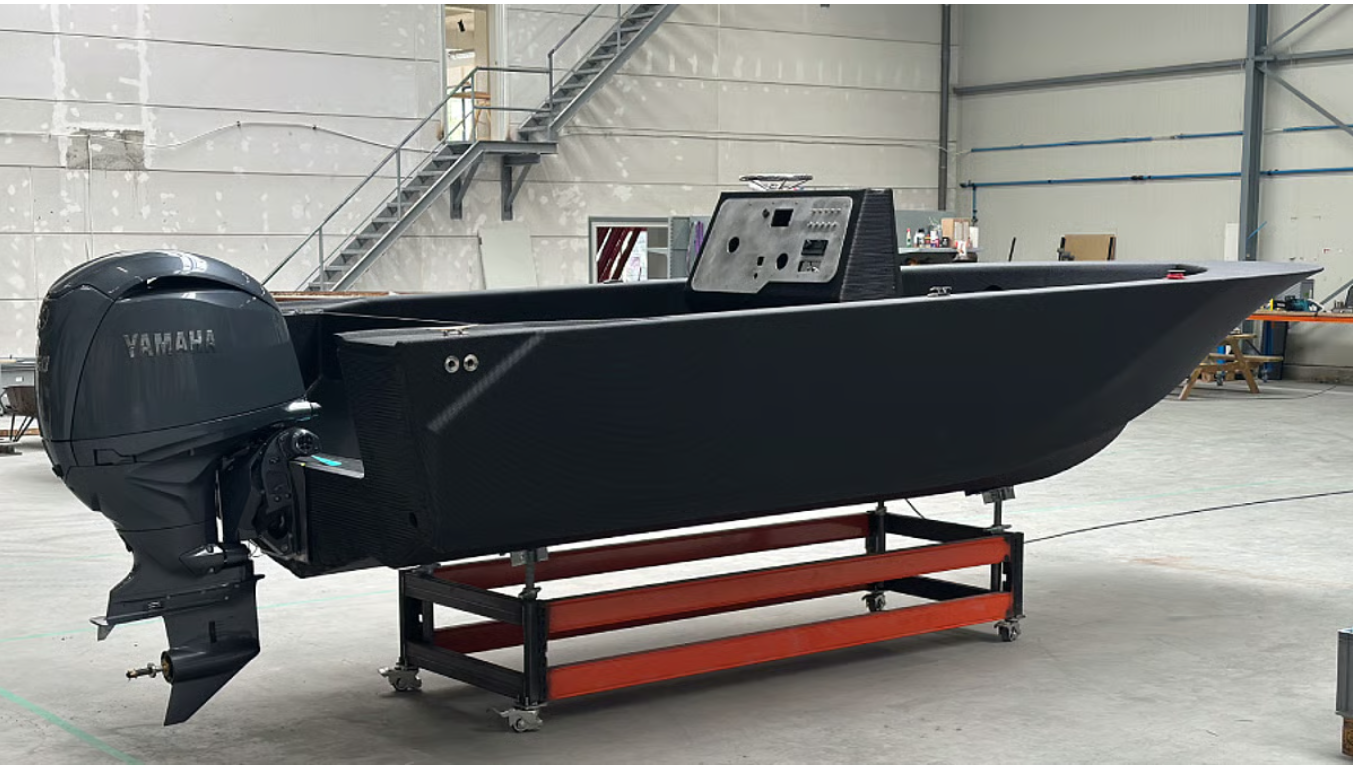 荷蘭公司將開設3D打印船舶
荷蘭公司將開設3D打印船舶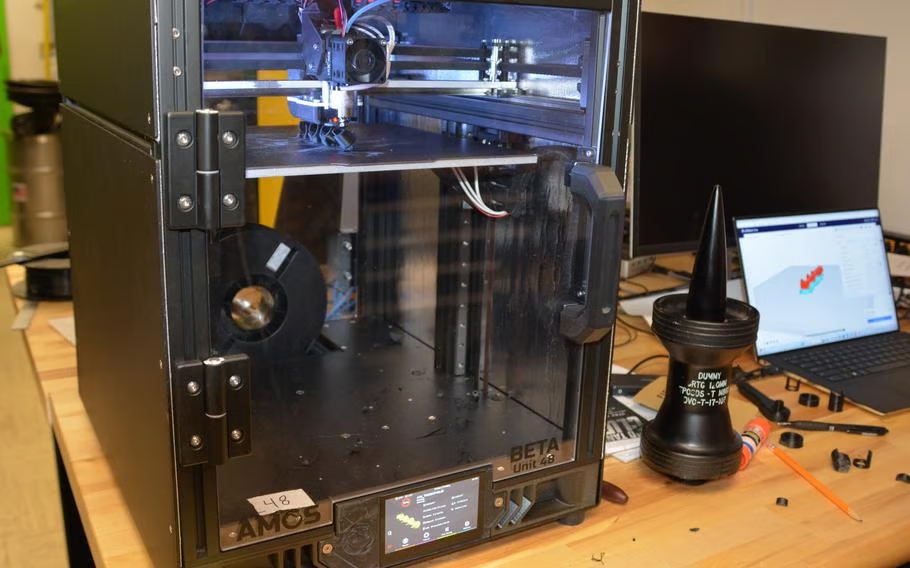 Chicago Additive推出AMOS
Chicago Additive推出AMOS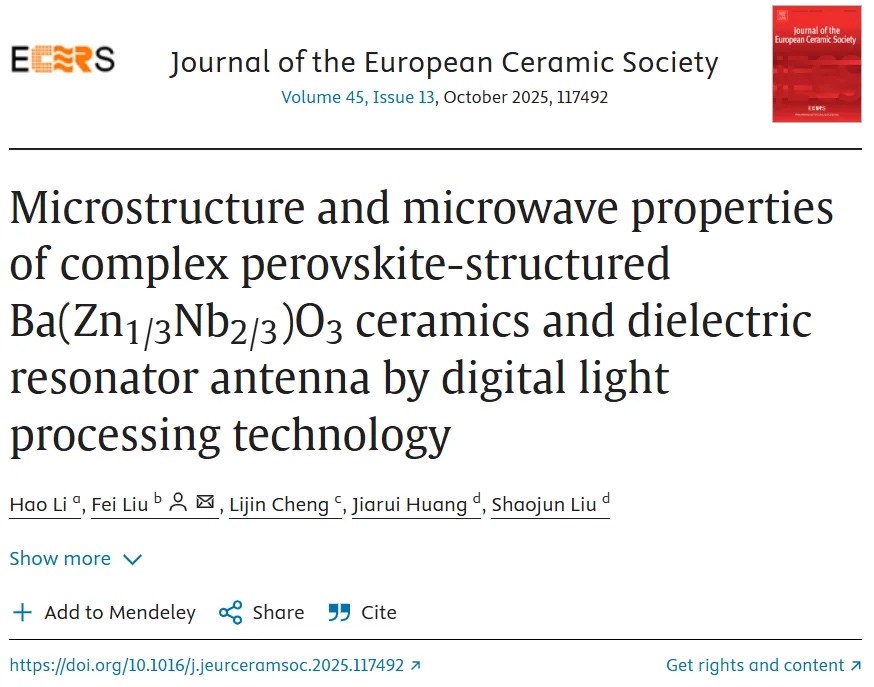 590MHz帶寬+超90%輻射效率
590MHz帶寬+超90%輻射效率 威斯康星大學麥迪遜分校工
威斯康星大學麥迪遜分校工 突破性生物3D打印
突破性生物3D打印 迪拜LEAP 71公司
迪拜LEAP 71公司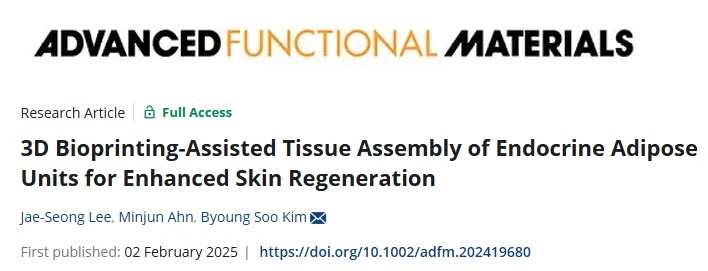 3D生物打印構建內
3D生物打印構建內 《Small Science
《Small Science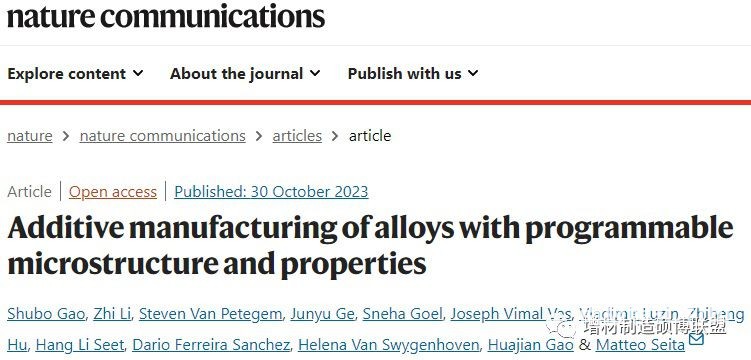 南洋理工-劍橋大
南洋理工-劍橋大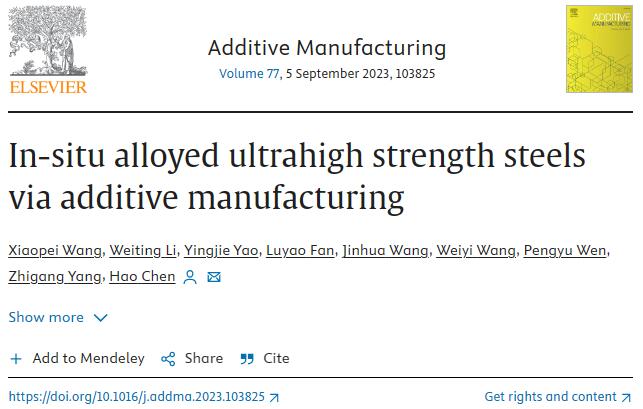 清華大學:抗拉強
清華大學:抗拉強